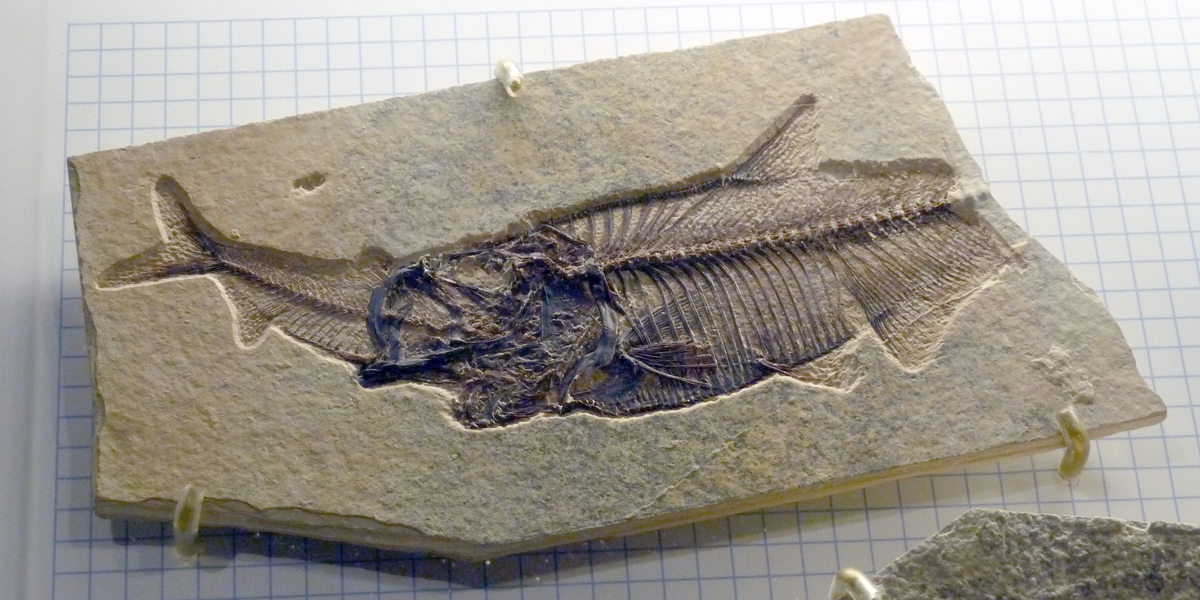Chapter by:
Jonathan R. Hendricks, Paleontological Research Institution, Ithaca, New York
This chapter was lasted updated by the author on March 4, 2019.
Chapter citation:
Hendricks, J. R. 2017. Nature of the fossil record. In: the Digital Encyclopedia of Ancient Life. http://www.digitalatlasofancientlife.org/learn/nature-fossil-record/
Chapter contents:
Nature of the fossil record ←
– 1. Body fossils and trace fossils
– 2. The process of fossilization
– 3. Types of fossil preservation
– 4. Completeness of the fossil record

This specimen--from the Eocene Green River Formation--shows the fossilized skeleton of a larger fish (right) that apparently died while eating a smaller fish (left). Specimen on exhibit at Fossil Butte National Monument, Wyoming. Photograph by Jonathan R. Hendricks.  This work is licensed under a Creative Commons Attribution-ShareAlike 4.0 International License.
This work is licensed under a Creative Commons Attribution-ShareAlike 4.0 International License.
Long ago, the term fossil (or fossilis, in the original Latin) was applied to any object dug up from the ground.
Today the word fossil is used to refer only to objects associated with prehistoric life forms. So, a diamond or gold nugget dug from the ground does not count as a fossil, but an ancient shark tooth does.
Lieberman and Kaesler (2010, p. 18) defined a fossil as “the remains or evidence of life from a previous geological time.” Today (literally the day you are reading this), we are in an interval of geological time known as the Holocene epoch, which began about 12,000 years ago. Any remains or evidence of ancient life from before the Holocene epoch definitely counts as a fossil. Determining the status of remains (i.e., fossil or not fossil) younger than 12,000 years old often depends upon whom you ask, but this is not really an issue that scientists worry very much, especially since the vast majority of remains of ancient life are much, much older than this. Contrary to popular belief, an object does not need to have been turned to stone to be considered a fossil: it just needs to meet the definition given above.
The study of Earth’s record of ancient life—that is, the fossil record—is known as paleontology, which is practiced by individuals professionally known as paleontologists.
Music video for "I'm a Palaeontologist" by They Might Be Giants (YouTube).
This chapter will introduce you to the nature of the fossil record. First, you will learn about the two major types of fossils (Section 1). This is followed by a brief overview of how fossils form (Section 2) and presentation of some of the most common types of fossil preservation (Section 3). Finally, you will learn about a key, and sometimes vexing, paleontological problem: how complete is the fossil record? (Section 4).


